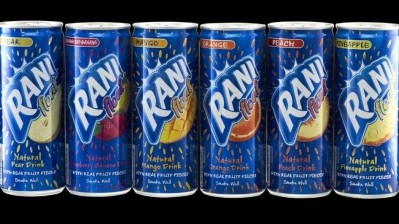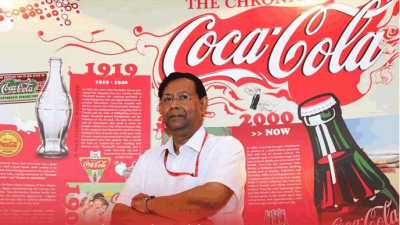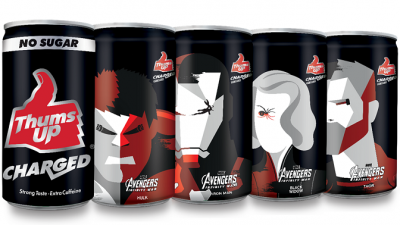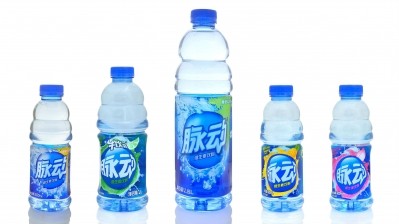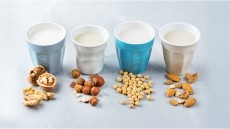Coca-Cola India’s Thums Up expansion shows the power of local beverage brands
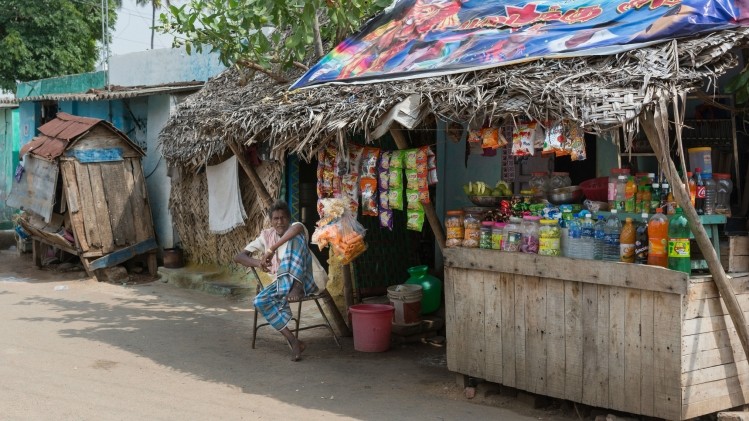
Coca-Cola India and South West Asia President T. Krishnakumar told reporters that Thums Up will be launched in Bangladesh, Nepal, Bhutan and Sri Lanka.
"It would be made locally and then marketed locally,” said Krishnakumar.
“We have manufacturing capabilities in Sri Lanka, Bangladesh, and Nepal."
Beyond that, Krishnakumar said the company is planning to take the brand global.
So far, Thums Up has a presence in the Middle East but mainly to cater to overseas Indians. The brand has not been officially launched outside of India as yet.
Home-grown stalwart to billion-dollar brand
Thums Up is a 40-year-old Indian soft drink that was bought over by Coca-Cola from Parle Bisleri in 1993 — along with Maaza, Limca, Citra and Gold Spot — to compete with Pepsi in the Indian beverages market.
Despite competition from Coca-Cola itself and Pepsi over the years, Thums Up remains India’s largest cola brand by far, with sales of around US$800 million (or Rs 5,200 crore).
Towards the end of last year, Coca-Cola India launched Thums Up Charged — an energy drink variant with a higher caffeine content.
While the company had earlier stated it expects the brand to become India’s first home-grown “billion-dollar” flavoured drink by 2020, based on the current growth and market response, Krishnakumar said he expects it to be sooner.
Previously, the company had also said it expects Maaza to become a billion-dollar brand, possibly by 2023.
According to Euromonitor International, Thums Up is the largest cola brand in India and Sprite, another Coca-Cola-owned brand, is top of the Indian carbonated beverage market. In 2016, Sprite had a retail share of 20.5% while Thums Up had a 15.4% share.
Nonetheless, Krishnakumar had said, “The consumer’s choice today is much more precise and varied. We are, therefore, transitioning ourselves to being a company that can offer a range of beverages.”
In India, Coca-Cola has a presence in the categories of sparkling beverages, juices and juice-based drinks, and water.
The next part of its strategy is to ramp up its portfolio of juices with locally-grown fruits from various regions of India. The company is also creating a new category of frozen dessert under the brand "Minute Maid Perfect Fruit", due to be launched in the summer.
John Murphy, president of Asia Pacific Group, Coca-Cola, affirmed these growth plans and said, “The broader trends remain very optimistic and I expect India to become our fifth largest market soon.”
Local domination
While Coca-Cola’s acquisition of Thums Up dates back two decades, major food firms are increasingly acquiring popular local companies to gain a foothold in the market.
Last October, Kentucky-based distiller The Sazerac Company acquired a stake in John Distilleries, whose brands include Original Choice Whisky and Paul John Indian Single Malt.
Established in 1996, John Distilleries has eight manufacturing facilities across seven Indian states.
In November, South Korean giant Lotte Confectionary fully acquired India’s Havmor Ice Cream Ltd for about US$157.9m to enter the ice cream snacks segment as well as expand its network across India.
Around the end of the year, Singapore’s Food Empire Group subscribed for 684,000 shares in Indus Coffee Pvt Ltd for about US$1.8m, for export manufacturing, and acquired an 80% stake in India’s Positive Food Ventures and its Brewhouse ice tea. This allowed Food Empire to expand its reach and presence in the Indian market, along with acquiring a rapidly-growing ice tea product.
Various multinational food companies have tried and struggled to promote their own brands in India.
For example, after struggling to establish Heinz ketchup in the Indian market, the company focused on its acquired Glaxo portfolio with the Complan brand, which still constitutes about 50% of the company’s turnover.
